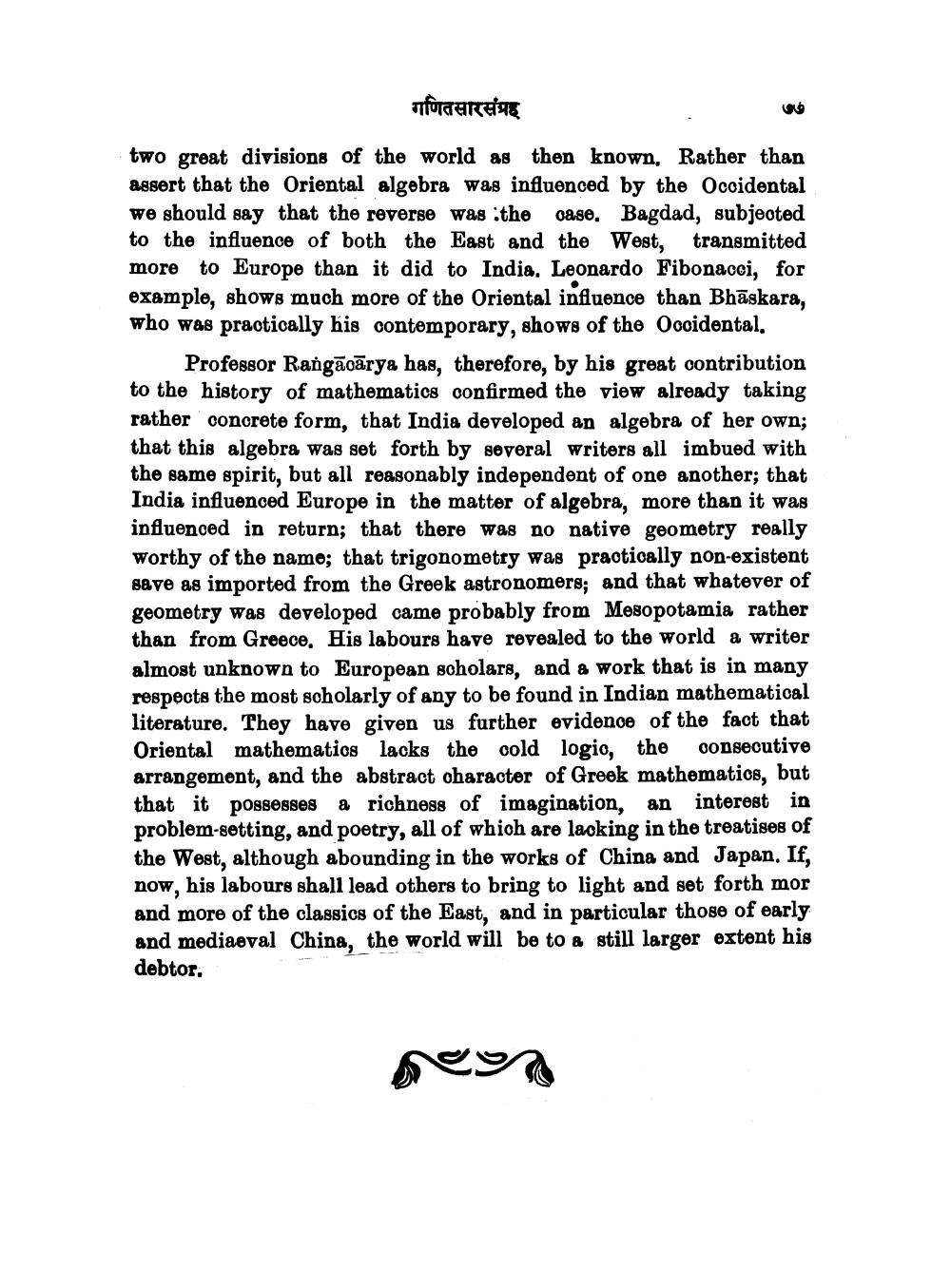________________
गणितसारसंग्रह
two great divisions of the world as then known. Rather than assert that the Oriental algebra was influenced by the Occidental we should say that the reverse was the case. Bagdad, subjeoted to the influence of both the East and the West, transmitted more to Europe than it did to India. Leonardo Fibonacci, for example, shows much more of the Oriental influence than Bhāskara, who was practically his contemporary, shows of the Occidental.
Professor Rangācārya has, therefore, by his great contribution to the history of mathematics confirmed the view already taking rather concrete form, that India developed an algebra of her own; that this algebra was set forth by several writers all imbued with the same spirit, but all reasonably independent of one another; that India influenced Europe in the matter of algebra, more than it was influenced in return; that there was no native geometry really worthy of the namo; that trigonometry was practically non-existent save as imported from the Greek astronomers; and that whatever of geometry was developed came probably from Mesopotamia rather than from Greece, His labours have revealed to the world a writer almost unknown to European scholars, and a work that is in many respects the most scholarly of any to be found in Indian mathematical literature. They have given us further evidence of the fact that Oriental mathematios lacks the cold logio, the consecutive arrangement, and the abstract character of Greek mathematics, but that it possesses a richness of imagination, an interest in problem-setting, and poetry, all of which are lacking in the treatises of the West, although abounding in the works of China and Japan. If, now, his labours shall lead others to bring to light and set forth mor and more of the classics of the East, and in particular those of early and mediaeval China, the world will be to a still larger extent his debtor,
se




